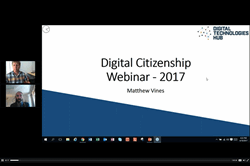Privacy Basics: Passwords, Tracking, and Data Retention
This module cover three areas of privacy including passwords, basic privacy issues and data retention. Students learn about web mechanics, security, and privacy as they analyse and reflect on common surveillance practices, as well as their own privacy habits.
Additional details
| Year band(s) | 7-8 |
|---|---|
| Format | Web page |
| Core and overarching concepts | Privacy and security |
| Australian Curriculum Digital Technologies code(s) |
AC9TDI8P13
Explain how multi-factor authentication protects an account when the password is compromised and identify phishing and other cyber security threats
AC9TDI8P14
Investigate and manage the digital footprint existing systems and student solutions collect, and assess if the data is essential to their purpose |
| Keywords | Digital citizenship, Privacy;Passwords, Data Retention, Internet, Security, Unplugged, Cyber security |
| Integrated, cross-curriculum, special needs | Digital Literacy |
| Organisation | Mozilla |
| Copyright | Mozilla Foundation. Creative Commons BY-SA 4.0 |
Related resources
-

Digital citizenship (Oct 2017)
This webinar covered what digital citizenship is and why it is important.
-

Encouraging Healthy Technology Use in Young People
This video discusses current trends in young people's tech use, what research tells us of its impact, and strategies to promote a healthier, more balanced engagement with technology in their daily lives.
-

A day in the digital life of teenagers
In this article, Sonia Livingstone discusses the results research on the use of digital devices by 13-year-olds,which she conducted over a year-long period.
-

ASD CyberEXP
ASD CyberEXP will take you through a day in the life of five cyber specialists experts working in the Australian Signals Directorate helping to secure the government's information, services and personnel.
-

AI image recognition - exploring limitations and bias
A hands-on activity to practise training and testing an artificial intelligence (AI) model, using cartoon faces, including a discussion about sources of potential algorithmic bias and how to respond to these sources.
